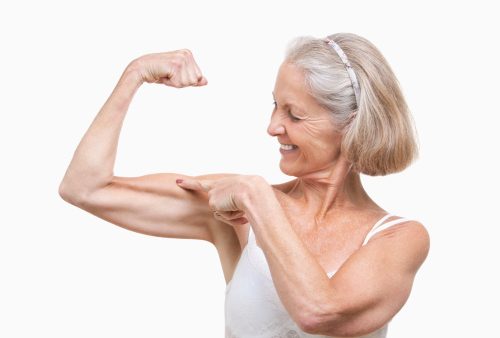7 Bone Strength Exercises

Hip rotation
This hip rotation is intended for special groups such as the elderly, people suffering from osteoporosis, joint problems or general deconditioning, but can be performed by anyone.
1. Lift one leg at an angle of 90 degrees while maintaining alignment in the knee, thigh and shoulder.
2. Turn the thigh outwards slowly and in a controlled manner while keeping the thigh neutral. Hold each position for three to five seconds and work your way through to a certain number of repetitions. Then change your legs.
Inclined push-ups
This tilt-push-up exercise is designed for special groups such as the elderly, people with osteoporosis, joint problems or general deconditioning, but can be performed by anyone. It can be carried out on anything that offers assistance in tilting, such as a bench, stairs or chair.
1. The arms shall be approximately shoulder width apart. Keep your chest out, shoulders down, back and body in a straight line.
2. Grab the buttocks and abdominal muscles and lower the chest as much as possible without excessive strain on the joints. Shot at the bottom of the chest and triceps, bend the back and return to the original position. The body should remain in a straight line. If you need to start with a higher inclination, try the wall. As you get stronger, move your starting position down.
Drunken bird
This exercise for drinking birds is designed for a wide population. Weight retention is not compulsory; before adding weight make sure that you can perform the exercise correctly even without weight.
1.Balance with chest outwards, shoulders down, back and neck in line with the spine on a slightly bent leg.
2. Having slightly bent the supporting leg, start to pump the other leg under the body.
3. When the upper body is tilted forward, hold the back back to ensure that the hamstrings and buttocks are tense, not the lower back. Do not lower your chest and shoulders during the whole exercise; do not twist your back. Keep your thighs parallel to the floor to grab the core.
Squatting in a chair
This chair squat exercise is designed for special groups such as the elderly, people with osteoporosis, joint problems or general deconditioning, but can be performed by anyone. It can be carried out with or without scales.
1. Start with legs slightly wider than the width of shoulders, chest out, shoulders down and back, core tension and hip joints in neutral position
2. Pull your buttocks back and bend your knees, take a sitting position. On the way down, pinch the buttocks and quads. Keep the muscles engaged once in a sitting position. Do not sit all the way down, bounce or swing to get up from a sitting position. If the chair is too hard, start with something taller and go downstairs.
Achieving balance
This one-legged balancing exercise targets specific groups such as the elderly, people with osteoporosis, joint problems or general deconditioning, but can be performed by anyone.
1. Start with the width of the shoulders of the feet to the side and lift one foot in front of the body, showing the tip of the foot. Keep the knees, thighs and shoulders level. Make sure that the hips remain horizontal and point forward.
2. Slowly move the raised leg toward the body and hold it for at least one to two seconds.
3. Then move the raised leg behind the body and hold it in this position for at least one to two seconds. Repeat this until a certain number of repetitions or side changes.
Plank row
This exercise, using a series of boards, is designed for the general public.
1. Start from the position of the board, putting your hands on dumbbells or on the floor, depending on the strength of your wrists.
2. keep your hips as parallel to the floor as possible and use your back and biceps to pull the dumbbell off the floor. Hold the dumbbell close to the body and pull the elbow back as far as possible. Either change sides or perform a certain number of repetitions on one side before moving to the other side.
3. Pressing between each row of barbells is optional and can also be done from the knees.
Squat
This knee bending exercise is intended for the general public. It is a plyometric movement that strengthens the bones and must be performed repeatedly and without interruption for a certain period of time. Plyometrics is a "jumping exercise" which is designed to generate maximum strength and speed. They require rapid transitions between stretching and contracting muscles.
1. Start in a standing position
2. Jump back to the squat position and then immediately jump back to the standing position. Land with 'soft' (bent) knees, lean back with your knees behind your toes on the toes and land on the ball of your feet when you return to the standing position.